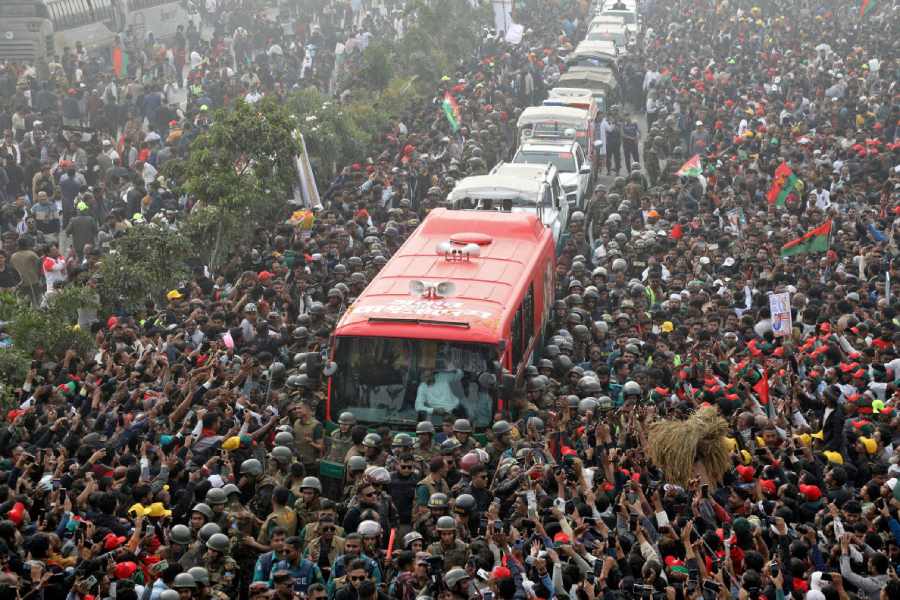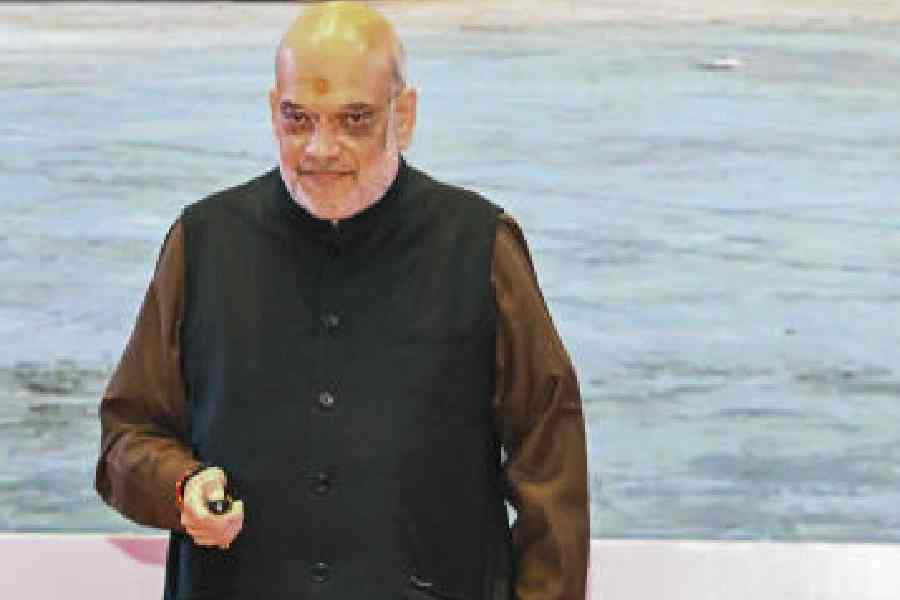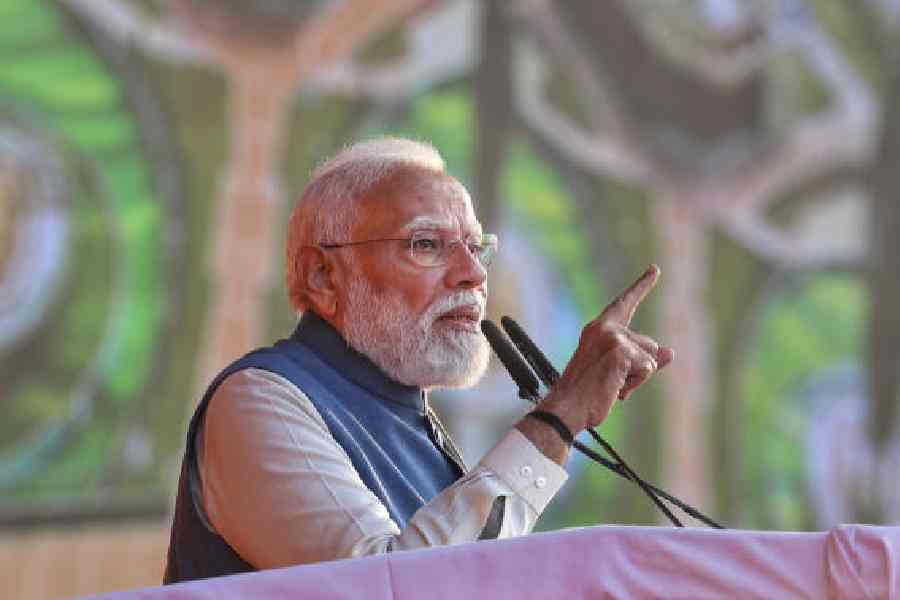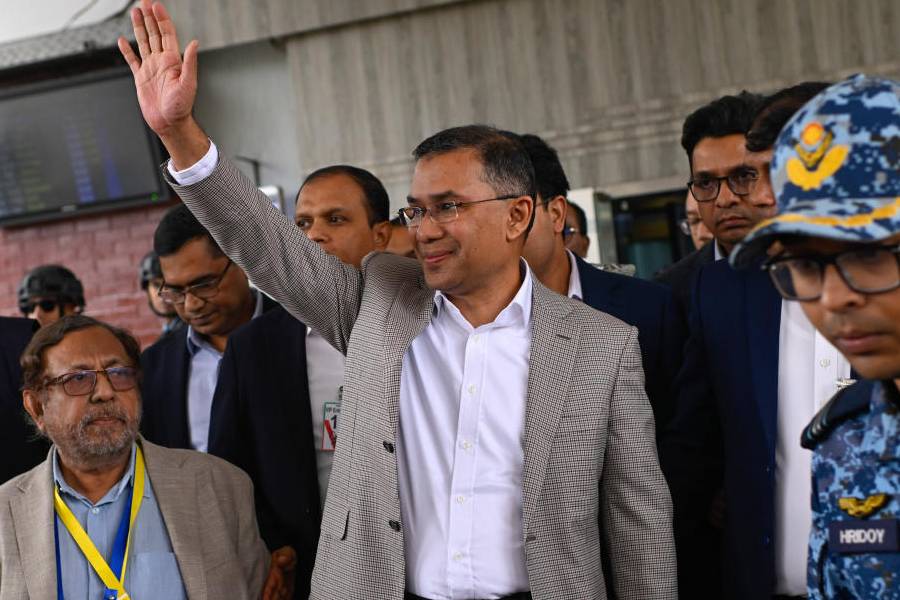 |
“Time present and time past/are both perhaps present in time future” — T.S. Eliot, Four Quartets
In Hyderabad, the most unsuspecting lane may hum a story. Centuries old, it might have a bit of dust on it and so one needs to put ears to the walls.
Once one is set to look at things a bit differently, it slowly seeps in how today and tomorrow seamlessly flow into each other at every bangle market and tea stall.
 |
| A view of Golconda |
But yes, first the food.
Before you set off you must fill yourself adequately with Hyderabadi biryani, haleem, kebabs and qubani ka meetha at the well known foodies’ haunts — Shadab, Paradise or Bahar, take your pick.
 |
| A tomb of a Qutb Shahi ruler |
Disclaimer: If you miss out on any of the items or think that the joint that you ate at was not the best, just remember the names and drop them when your folks ask.
But then what’s definitely not worth missing is the tryst with the past. And when walking down the past of a civilisation why not begin from the beginning?
 |
| A dressing room at Golconda |
And that should take you to Golconda. From a thirteenth century mud fort built by the Kakatia kings, Golconda fort evolved into the capital of the Qutb Shahi kingdom. It took a long 62 years to build, yet only eight months to be reduced to ruins when Aurangzeb’s army, after seven unsuccessful attempts, captured it through the treachery of the fort’s commander.
 |
| A view from the top |
However, its history and splendour lives on, as does the magnificent and carefully planned “air conditioning” of the Diwan-i aam and Diwan-i-khas.
The fort is a marvel of architectural wonder.
 |
| Takht-e-Nishan |
Visitors are generally captured by the mind-boggling acoustics, not to forget the water channels, tanks, the mosque and the temple of goddess Kakati, which the Qutb Shahi kings refused to destroy.
The fort walls also enclosed a once renowned cradle of diamonds and a dilapidated granary that still echoes the history of an imprisoned Ramdas and the Qutb Shahi dynasty.
 |
| An antique chandelier at Chowmahalla Palace |
Interestingly, Hyderabad got its name from Haider Begum, formerly a dancer called Bhagmati, whose beauty smote one of the Shahi rulers.
Qutb Shah IV married her and post conversion to Islam, she came to be known as Haider Begum. Hence, the names Hyderabad and Begumpet.
 |
| Durbar Hall |
With tales like these, Golconda is an experience that haunts you forever.
The resting places
“It is said some memories will remain...”
 |
| A living room at the palace |
The view from the peak of Golconda will reveal a series of seven majestic tombs stretching away to the left of the horizon...behold the resting places of the Qutb Shahi rulers.
Ensconced in the Ibrahim bagh, these are the final abodes of six kings and the unique Haiat Begum, the daughter of Haider Begum, after whom the city of Hyderabad is named, and was affectionately referred to Ma Saheb, even as a princess.
Also the unfinished tomb of the Qutb Shahi ruler whom Aurangzeb, after his coup, spirited away to Daulatabad.
 |
| The Clock Tower |
Here is the tomb where a whisper in a strategic corner of the monument can turn into a full-throated song. Among the monuments here are a deep tank which is said to never dry up, and the One-Day Mosque, which was erected in the space of a single day, so that Aurangzeb could pray after his victory.
Here the heroes of many stories and a begum who reigned till her son came of age, rest in peace, the ones who ruled for more than 170 years. a stately dome indeed!
The remnants of glory are not all in the past, however.
The power and the glory may be glimpsed at the Chowmahalla Palace, the seat of the Asaf Jahi dynasty and was the official residence of the Nizam.
In Persian, Chahar means four and in Arabic Mahalat (plural of mahal) means palaces, hence the name Chowmahalla, or four palaces.
All ceremonial functions including the accession of the Nizams and receptions for the governor-general were held at this palace.
Stretch out on the lawns for a little bit of rest and admire the views of the courtyards and the clock tower, as well as the palaces, believed to be modelled on Shah of Iran’s palace in Tehran.
The Khilwat Mubarak, heart of Chowmahalla Palace comprises a grand pillared Durbar Hall with its pure marble platform, the Takht-e-Nishan.
The dazzling chandeliers and the pristine hall is a sight for the architecturally inclined.
Browse through the art galleries and catch a glimpse of the splendour of the lives the Nizams led at this restful retreat.
Once you have had your fill of the monuments, try the Lebanese food at Kibbeh lounge or the innovations in Hyderabad cuisine at Pista House or Chutney’s.
Over the years, varied flavours of utthapams and dishes like mutton khichdi have catered to the appetites of the adventurous.
For the die-hard history buffs, Salarjung Museum is the Mecca to go to. I ended up spending a whole day browsing the art and sculpture galleries alone.
Impeccably kept and with a magnificent collection of memorabilia, a dedicated visitor can expect to spend at least two whole days going over the museum.
The museum’s gift shop is also a treasure trove of souvenirs for the avid shopper, particularly one who wishes to pick up things that are typical of the city and its culture.
In the evenings, soak in the spirit of Hyderabad at Charminar, with sips of hot, strong and milky tea and the famous “bakery biscuits”.
A wide array of biscuits and baked goods can be bought here and packed, make good presents for friends back home, waiting to hear of your culinary adventures.
It is widely accepted that Charminar was built at the centre of the city to commemorate the eradication of plague. Built in 1591 by Mohammed Quli Qutb Shah, the fifth sultan of the Qutub Shahi dynasty of India, there are varying legends about the structure.
One account says that the sultan built it in honour of his wife, Bhagyamathi (or Bhagmathi), together with the construction of Hyderabad itself. The building got its name from its four minarets, which were possibly meant to honour the first four caliphs of Islam.
Another legend also holds that a secret tunnel runs underneath the monument that connects the palace at Golconda to it, should the royal family need to escape. But so far, no such tunnels have been found.
Shop to your heart’s content for exquisitely crafted glittering bangles and that most elegant of all semi-precious stones, the pearl, to complete your trip.
Heart, mind and stomach replete, cherish your stay in Hyderabad, for it is here that history is not just written — it walks, speaks and echoes among the lanes and monuments.
'It is said that some memories will remain. Troubled present nothwithstanding, Hyderabad’s past is a treasure trove for a history buff'











